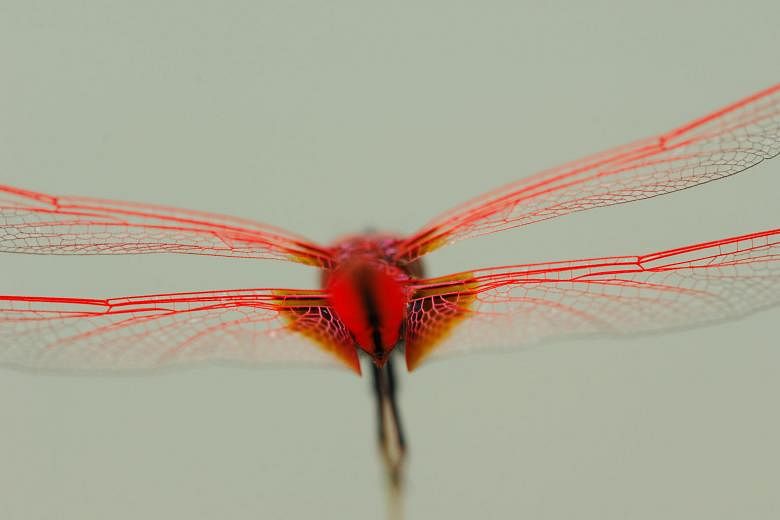The dragonfly, seen here perching over the waters of MacRitchie Reservoir, was designed by nature more than 300 million years ago.
It is widely recognised as one of the masters of flight in the animal world.
It can fly as slowly as a snail, accelerate to 70kmh and make all sorts of manoeuvres by beating its four wings out of sync with one another.
Made of chitin, a natural material found in animals from ants to lobsters, the corrugated wing surface generates a pattern of air currents that gives the wing lift while reducing air resistance.
The corrugated surface also imparts great strength and flexibility while making the wing extremely thin and lightweight.
Scientists are drawing inspiration from the dragonfly wing to design flexible electricity-generating turbine blades that can handle both weak and strong winds, unlike conventional rigid blades that work only at moderate wind speeds.
The dragonfly wing even has anti-bacterial properties, owing to extremely tiny surface protrusions that can slice open bacterial cells. This has been successfully emulated on artificial surfaces that could eventually be used on clothes.

